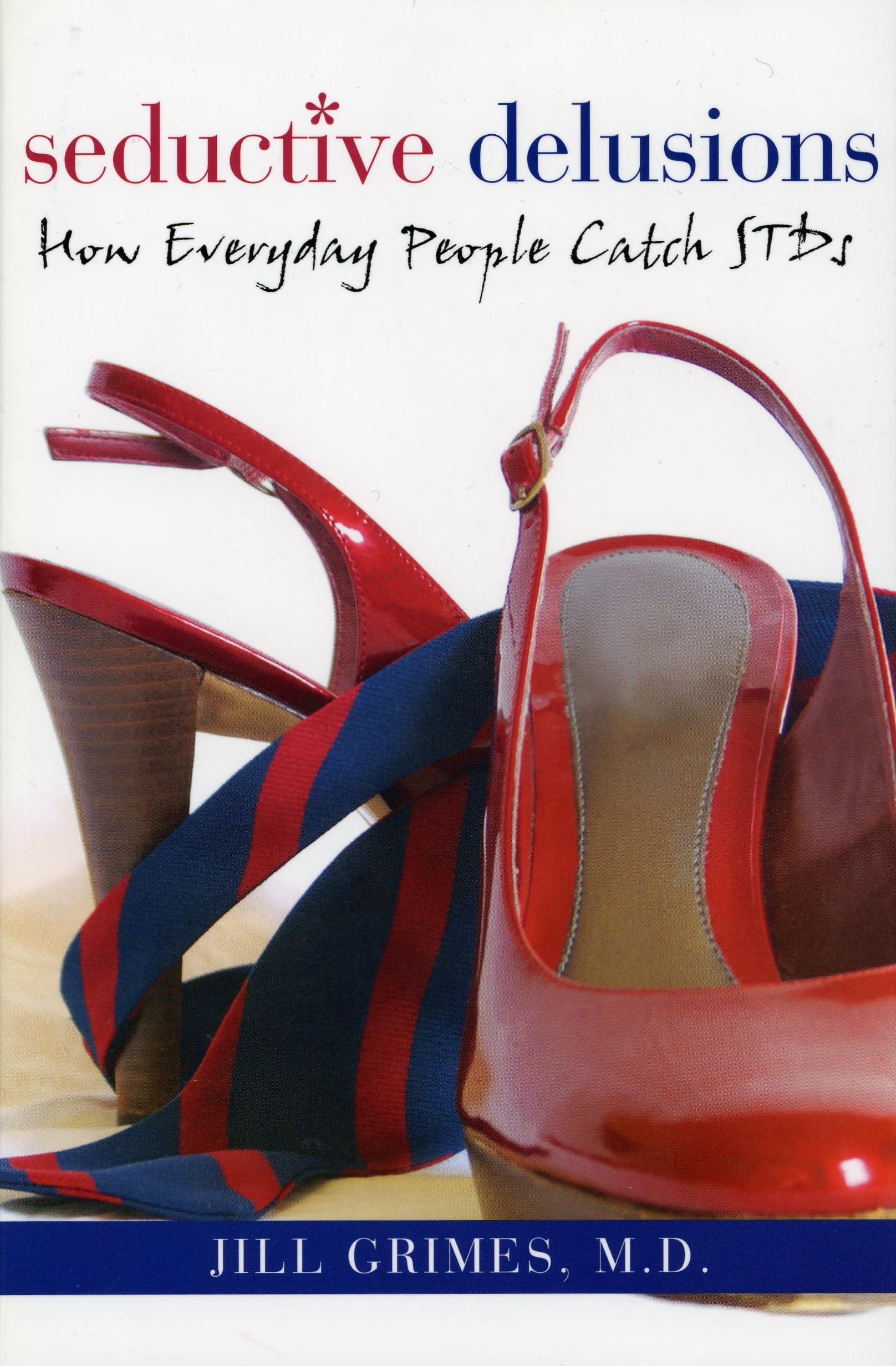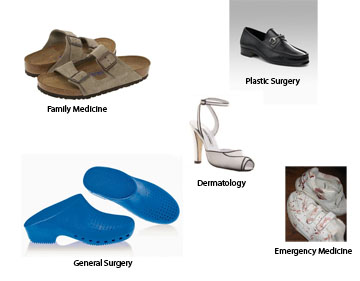April 25th, 2009 by eDocAmerica in Better Health Network
No Comments »
This article was co-authored by Elyse Chapman, who became an e-patient through the following process:
I recently became acquainted with a woman in Iowa, Elyse Chapman, who was concerned about her “fibroids”. I heard about her from a colleague whose online moniker is “e-Patient Dave”. Dave deBronkart used information from the internet to successfully steer the course of his own therapy for kidney cancer . Elyse is a friend of Dave’s who was scheduled for a hysterectomy because of a very large, mass, probably a uterine fibroid, a benign but often problematic tumor of the smooth muscle fibers of the uterus. She had problems with excessive painful cramping, bladder pressure and a sensation of swelling and bloating in her abdomen. A CT scan was ordered and showed a mass either on the ovary or uterus. The mass was so large that her doctors wanted to make sure that this was not a malignant tumor of the uterus or ovary. They had scheduled a total hysterectomy via exploratory laparotomy in 3 weeks and Dave was “consulting” with his online friends to see if anyone knew of a patient group with whom she could collaborate to see if there was an alternative to major surgery.
I volunteered to help. Shortly thereafter, I received an e-mail from Elyse and then gave her a call. I heard more details about her history, learned that she had lost her husband recently, and as a single parent, felt very shaky about the prospects of recovering from major surgery without help at home. She wondered why her doctors were so focused on performing a total hysterectomy and why she wouldn’t be a candidate for a laparoscopic approach. She also wondered if she really even needed to undergo surgery now, or could she safely wait and watch for a time.
Unable to determine for certain that an alternative approach was feasible in her case, I encouraged her, at the very least, to become more assertive about getting answers to her questions: If she wasn’t a candidate for laparoscopy, why not? I told her I’d do some further research about this and get back in touch with her. I looked this up on the internet and then sent her this e-mail:
I looked at some sites on laparoscopic hysterectomy. Here is one I thought was good:http://www.ohanlan.com/laparoscop.htmFrom what I can tell, it should be possible to remove even a large uterine mass via laparoscopy.Good luck getting an answer on this that makes sense to you. Let me know if I can help any further.
Elyse actually communicated directly with a nurse at the above site and it bolstered her belief that it may not be necessary to undergo a total abdominal hysterectomy. She communicated this to her doctors in Iowa who were still uncomfortable exploring alternative options. So, she sent me the following e-mail:
http://www.google.com/search?hl=en&q=fibroids+ultrasound&btnG=Google+Search&aq=0&oq=fibroids+ul
Charlie, have you heard of this — nuking the fibroid with ultrasound while using MRI to view and target the waves? Just learned of it today.Seems to me that U of I is wanting to just yank everything out even though there’s no proof that this growth is malignant. Sounds to my laywoman’s brain like at very worst there’s a 50-50 chance of malignancy, yet they do not want to do a biopsy for fear of rupturing something that might be ovarian and malignant, causing easy spread of malignant cells. What I don’t understand is how anyone can determine if its malignant without a biopsy, but obviously someone knows how to do that, because links in the above results say the ultrasound procedure works well for non malignant fibroids, which means that somehow there’s a way to determine malignancy or no without too much fuss.U of I insists that there is no better imaging method than the CT scan I had, but at least some of the above links state that MRI is better. Huh?? Who is right? Is this a case of “we only know how to use a hammer, so everything we see must be a nail” or maybe “we’re financially invested in [name your imaging method of choice], so we’re going to use and promote that”?Thoughts, please?
Elyse
Well, truthfully, I had not heard of this technique, so I did some additional research and found that the number of sites offering the procedure were limited, but sent these to her, with some additional links from the internet. In addition, this e-mail string reminded me that an increasing number of doctors and patients are opting for uterine artery embolization. I mentioned this, and she e-mailed me back that she was unable to find links for this procedure that I mentioned.
Here is my reply to her:
Elyse,
I should have used the “correct” term: uterine artery embolization.
Here: http://www.fibroidworld.com/UAE.htm
This is another very reasonable alternative for you to consider, maybe even more realistic than the ultrasound approach.
Charlie
After several more fax and phone exchanges between Elyse and the physician in California who published the web site noted above, and after phone exchanges with the physicians in Iowa, Elyse underwent an ultrasound examination that confirmed a large, single uterine fibroid about 6 or 7 cm in diameter. The Gynecologist/Oncologist in California felt that surgery was entirely optional at this point, noting that Elyse would likely experience shrinkage of the mass following menopause within a few years.
She is still in the process of finalizing her decision whether to proceed with a laparoscopic hysterectomy or take the “watch and wait” approach but is certain of one thing: she is NOT going to proceed with the scheduled total abdominal hysterectomy.
So, that is where we stand. But, what is the point? Well, the HUGE point is, Elyse is no longer content to blindly follow her doctor’s suggestions. Whereas they suggested she undergo a major surgical procedure, they didn’t even mention two significant new, less invasive procedures that might well be appropriate for her to consider, and did not give her clear information to consider the option of just watching and waiting.
The other point of the story is that a wealth of information is available on the web, but patients often need encouragement to seek it, and help interpreting it and applying it to their own situations. Peer support groups on line are one way to accomplish this and finding an interested, available physician to serve as an “e-patient advisor” is another way.
Either way, it is a good example of how patients are moving into the e-patient revolution and, through this process, the health care system is changing. In the meantime, join me in hoping Elyse soon finds the perfect solution for herself and has a great outcome.
*This blog post was written by Dr. Charlie Smith and originally published at the eDocAmerica blog.*
April 16th, 2009 by eDocAmerica in Better Health Network
No Comments »
Stroke is a major cause of disability and death in the U.S. and worldwide. Modern medicines like statins (and old ones like aspirin) are helpful in preventing both initial and secondary stroke in patients at risk. But, are there simple things you can do to lower risk?
Yes, you say! Well, indeed, you are correct. Twenty thousand men and women (age range, 40–79) without histories of stroke or heart attack were recently analysed in the U.K. for the effect of 4 simple behaviors: not smoking, regular physical activity, moderate alcohol intake (1–14 drinks weekly), and high fruit and vegetable intake .
Patients engaging in 3 or 4 of the activities were significantly less likely (2 times!) to suffer a stroke over the next decade. Patients who slipped up a bit and only did 1 or 2 of the activities did have significant stroke risk, though not quite as much as those who sat on the sideline and engaged none of the behaviors.
So, grab the baton and step up to prevent stroke. As always, questions and comments are welcome.
*This blog post was originally published by Jerome Ecker, MD at the eDocAmerica blog.*
April 14th, 2009 by Dr. Val Jones in Book Reviews
2 Comments »
 I recently met the author (Dr. Jill Grimes) of Seductive Delusions: How Everyday People Catch STDs at the AMA’s 29th Annual Medical Communications Conference in Albuquerque, New Mexico. Jill is a family physician in Austin, Texas, with a kind and down-to-earth demeanor. Jill is the type of doctor you like immediately – she makes you feel at ease because of her unpretentiousness.
I recently met the author (Dr. Jill Grimes) of Seductive Delusions: How Everyday People Catch STDs at the AMA’s 29th Annual Medical Communications Conference in Albuquerque, New Mexico. Jill is a family physician in Austin, Texas, with a kind and down-to-earth demeanor. Jill is the type of doctor you like immediately – she makes you feel at ease because of her unpretentiousness.
Jill told me that she wrote Seductive Delusions out of sadness and frustration with her inability to protect young people from STDs. Jill saw new cases of sexually transmitted diseases in her patients every week, and wanted very badly to reverse this trend. No amount of counseling “after the fact” had a sufficient effect on new cases, so she decided to launch a preemptive strike: an educational book targeting those who never thought they could contract an STD.
Seductive Delusions uses a “case based learning” approach to educating readers about STDs. Each chapter begins with two true life stories about young people who succumb to STDs. Characters are based upon the lives of patients whom Jill has treated over the years, but stories are blended to protect anonymity. The story-telling format (followed by fact-based summaries) makes the content more entertaining and engaging to read. I doubt that a textbook could hold readers’ attention as effectively as Seductive Delusions does.
I chose to read Seductive Delusions cover-to-cover in 2 sittings, and such a concentrated dose of horror stories made me feel hesitant about ever having sex again. I can also say that there was one uncomfortable moment in an airplane (I read the book on the way back from Albuquerque) when the man sitting next to me glanced at the cover and gave me a very shifty look, and spent the rest of the flight leaning noticeably towards the seat on the opposite side.
That being said, I did enjoy the book. Jill’s characters have an innocent quality to them – like the cast from “Leave It To Beaver.” And I think that was exactly her point – you’d never expect the Cleaver family to be touched by STDs, and yet the truth is that they are succumbing to them in record numbers. Part of the danger of being one of those supposedly “low risk” individuals is that sufficient precautions against STDs are not taken due to a false sense of security.
I had assumed from the title of the book that “everyday people” would include a wider range of characters than were presented. I have been concerned about the reemergence of STDs, for example, in the retiree community in Florida, and thought that Seductive Delusions might touch on that unexpected risk group. However, the target demographic for the book is the late teen to thirty-something heterosexual male and female. I agree with Jill that there’s an educational gap there – but I would have enjoyed her casting a wider net.
The other potential short coming of the book is that the narratives describing how the various characters contracted an STD are so engaging that the reader is left disappointed at never hearing about the long-term outcomes for these individuals. I became emotionally invested in the story (for example) of how Evan contracted HIV from his very first girlfriend (a woman who had been with a man who used IV drugs prior to dating Evan). I felt as if I were there with Evan when he received the devastating news about being HIV positive, and then he drifted away from the pages of the book never to be heard from again. The lack of resolution left me with an uneasy feeling – probably the same feeling that Emergency Medicine physicians experience at the end of each shift.
Nonetheless, I would highly recommend this book to all sexually active young people. It is eye-opening and disturbing in the right sort of way. It’s the kind of book that will help people think twice before they become intimate with others, and take stock of the true health risks involved. I can only hope, along with Jill, that this book will reach the right eyeballs at the right time – and reduce the devastating spread of sexually transmitted diseases in America and beyond.
March 18th, 2009 by Gwen Mayes, J.D. in Better Health Network
No Comments »

It’s definitely not your mother’s public health campaign.
When the National Heart, Lung and Blood Institute (NHLBI) launched the Heart Truth campaign seven years ago to raise awareness of women’s heart health their partners were your typical patient groups and professional medical societies.
Not anymore. Today, their front row partner is Coca-Cola. Diet Coke that is.
Dr. Val and I were among a small group of women’s health advocates who met last week to hear the latest on NHLBI’s campaign with Diet Coke and how the fashion industry is bringing an important public health message to women.
Diet Coke’s commitment to the Heart Truth campaign is unprecedented, one of the “largest public awareness initiatives we have ever undertaken,” said Celeste Bottoroff, VP Living Well, Coca-Cola North America.
Leading Diet Coke’s campaign? Endless-legs Heidi Klum and other fashion-conscious women who have revamped the little red dress campaign into a national symbol with guts, curves and most importantly results.
“In 2002, only 34% of the women in this country knew heart disease was the leading cause of death among American women,” Dr. Elizabeth Nabel, NHLBI director, told the group. “But we’re making progress. Today, as a result of the Heart Truth campaign and others like it, 65% of the women now know it’s the number one killer.”
Nabel led a discussion of the common myths associated with women’s heart heath and recalled her own experiences as a cardiology resident when women were caregivers who supported husbands, fathers and other male family members through heart ailments but often ignored or brushed aside their own symptoms for fear that treatment would interfere with domestic chores such as childrearing, cooking, and cleaning. “Even when older women came in with heart problems, they weren’t treated as aggressively as men,” Nabel admitted.
“Most women still need educating,” she remarked. “80% of middle-aged women still have at least one risk factor for heart disease. And just one, doubles your risk of actually having heart disease.”
Joining Nabel were Phyllis Greenberger, President and CEO of the Society for Women’s Health Research, Susan Bennett, MD, Clinical Director of the George Washington University Hospital’s Women’s Heart Program and Robyn Flipse, MS, RD, author and nutrition consultant to discuss the campaign’s most important messages. First, heart disease is not a man’s disease, a point often raised by group’s such as those headed by Greenberger who cited research indicating that only 17% of cardiologists and 8% of primary care physicians know that heart disease is the leading cause of death among women.
And it’s not just for the aged either. “When a 40 year old woman has heart disease it’s worse than a 40 year old man,” said Bennett recalling patients in their 20s and 30s in her practice. “It’s never too late to change your lifestyle,” Flipse added. “The body is very forgiving. Even a 10% drop in weight can have a positive impact on blood pressure, cholesterol and other important risk factors.”
The Heart Truth campaign, thanks to the vision of Dr. Nabel and the willingness of NHLBI to partner with a highly visible, social icon such as Diet Coke is just what’s needed to cut through the feel good messaging that most public health campaigns resort to. Having lived with heart disease my entire adult life (now well into middle age), it’s a welcome boost of energy and the visibility possible with this campaign is unparalleled. Along with it comes some very important information that can save women’s lives.
Look for the heart truth emblem on 6 Billion Diet Coke cans, at community public forms, at American Idol, and fashion shows across the country. Diet Coke, with Heidi’s help, has even designed a new red dress label pin which strongly resembles an hour-glass. And what woman doesn’t want that?














